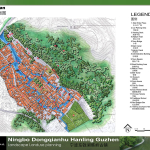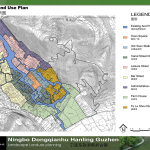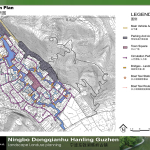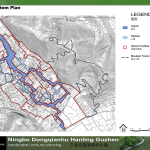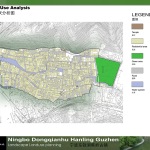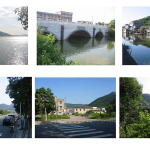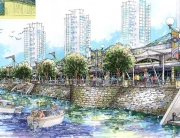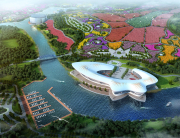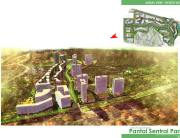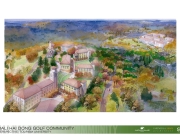Location: Hanling, China
Development Area: 15 ha
Design Style: Traditional Chinese
Hanling Old Town is located on Dongqian Lake, on the southeaster outskirts of Ningbo, 19 kilometres from downtown Ningbo covering a site of approximately 15 hectares, adjacent to a number of important tourist facilities.
The strategic location of Hanling Old Town presented an opportunity to develop a cultural and tourist facility for visitors to Ningbo, and SCI was commissioned to prepare the master plan and landscape design for this development. The master planning included a review of the existing assets such as the building condition and infrastructure, along with the current land uses including adjacent agricultural land. Key issues were the preservation and enhancement of the communities’ lifestyle and amenity, and maintaining the viability and access to traditional agricultural land, and enhancing the old town feel. A key objective of the master plan was to establish districts for different activities, including a town square as a focal point, an entertainment street, leisure street, Fu Lu Sou spiritual district, old town station as an arrival point, parking and administration and agriculture and natural district.
The districts are pedestrianised, with public transit and parking at the external edges, and the canals opened up for boat taxis. Each district was then reviewed in more detail with specific future land uses proposed. Specific land uses included art market, museum, everyday market, antique market, boutique hotels, retail, food and beverage, tea merchants, manufacture facilities for traditional goods, spa health centre, cultural shows, existing temples, cultural education, a brewery for local wine, and parkland.
The design concept was the creation of a green lifestyle, being eco-friendly and living with the natural surrounds, while preserving the historic village lifestyle and its organic growth. The tight urban nature of the landscape, along with the ample existing trees within that environment, and the fact that it was creating an old town, must result in the traditional Chinese style of the region.

